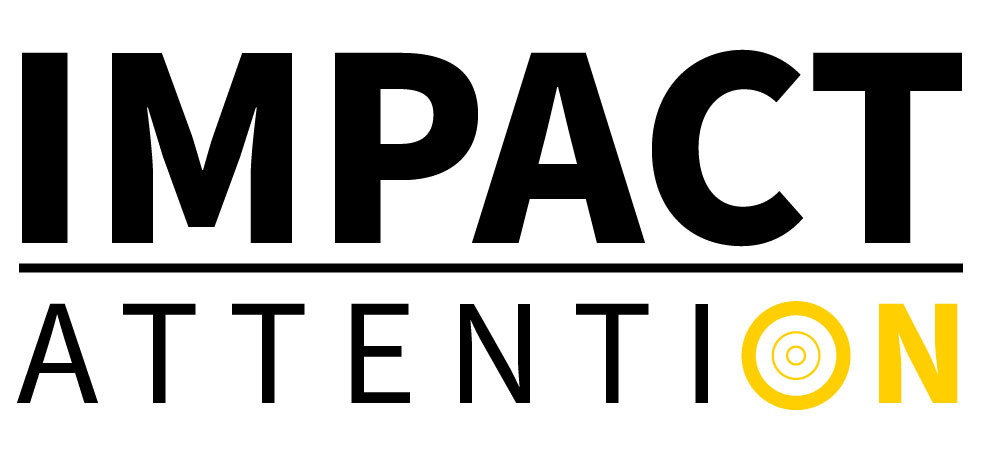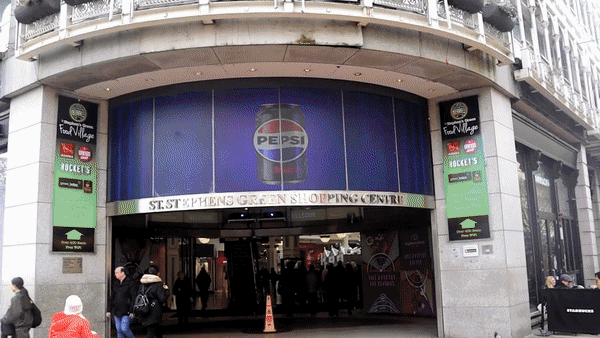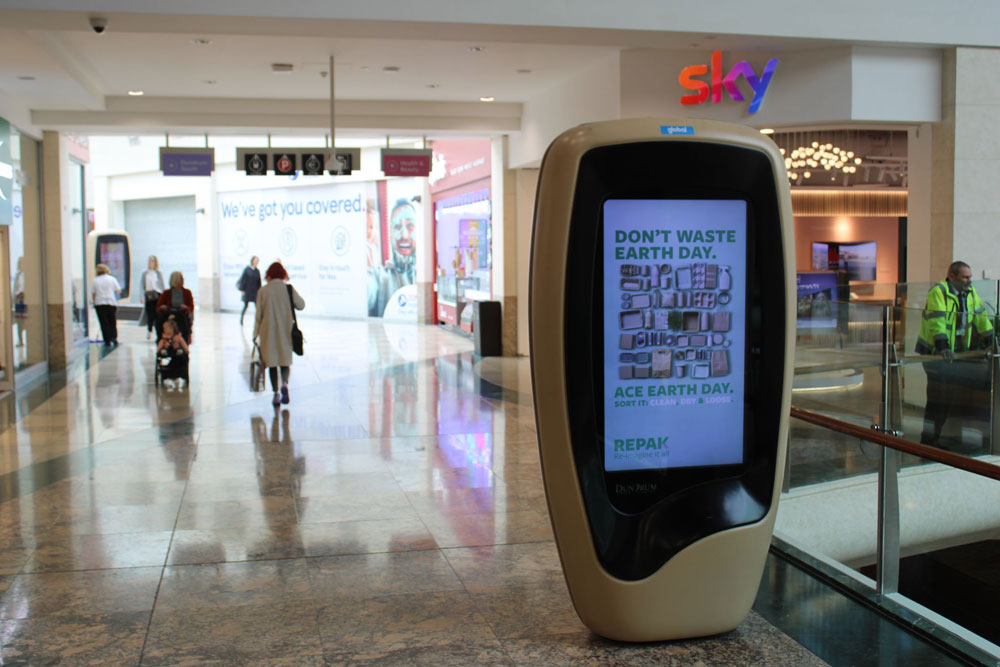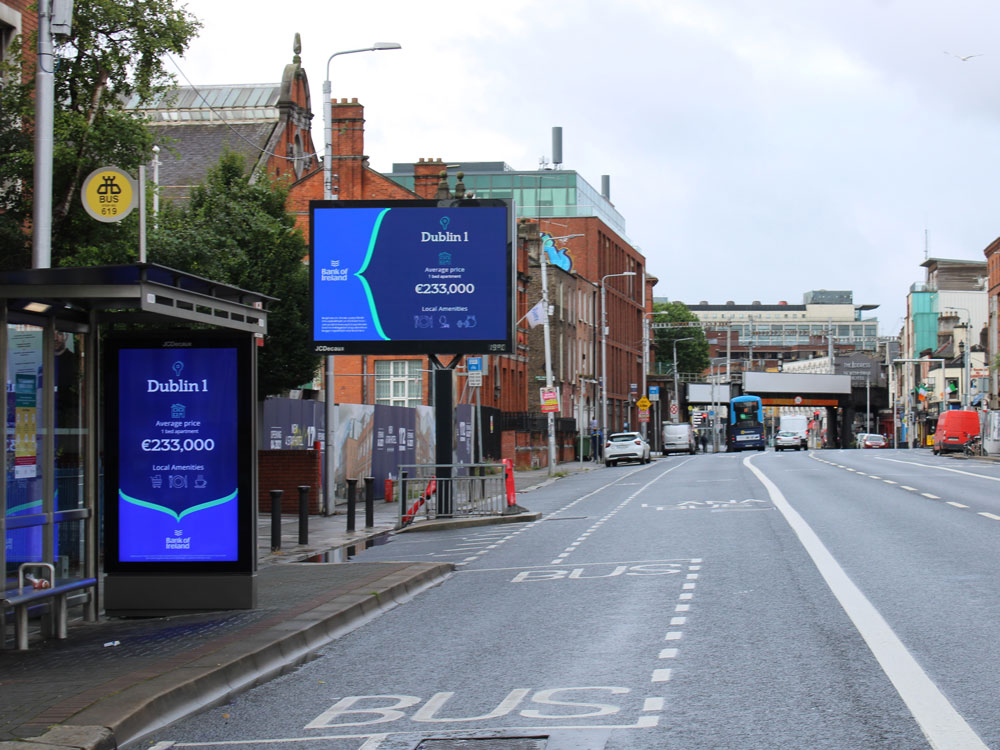 Aaron Poole, marketing executive, PML Group with this week’s Out \ Look on Out of Home
Aaron Poole, marketing executive, PML Group with this week’s Out \ Look on Out of Home
PML Group recently published the headline findings of IMPACT Attention, an Irish-first study delving into the unique position of OOH as a leader in the attention economy. In last week’s Out \ Look, we took a deeper look at the first 4 of 8 pillars surfaced relative to OOH attention. Today we examine the remaining 4 pillars including the effectiveness of innovation, public information, sustainability, and local contextual OOH.
The research involved a quantitative study conducted by Ipsos B&A, comprising eight waves of 300 respondents across Dublin, aged 16 to 54 years.
- Effectiveness of Innovation across Classic & Digital Formats
Innovative Formats and Their Impact
Non-conventional Out of Home advertising formats are fun, innovative, and effective means of generating brand recall. Our Special Effects study previously highlighted the hugely positive impact that innovative formats have in terms of noticeability, brand perception, and activation.
Not everything that counts can be counted. There is a priceless value on building real world emotional connections between brands and consumers. When it comes to synergy with mobile and social media, the most shared ads often provoke happiness, friendship, or inspiration. Our clients are continually looking for creative and innovative ways to engage audiences. OOH has a unique ability to literally stop people with special builds and dominations that are enjoyed and shared.
When it comes to more recent employments of innovation in the Irish market unique OOH activations such as projections, lenticular posters, and sound-enabled transit tunnels have proven to be exceptionally effective at capturing consumer attention, with our study noting 85% of respondents to consider this the case.
The figure remains the same when it comes to the placements of innovative or unusual advertising formats creating the perception that the brand is more memorable. For both statements, demographics were fairly unwavering across the board.
Moreover, the study also found that 84% of respondents consider brands who make use of these innovative formats as being innovative themselves, setting great expectations for those who decide to go beyond the billboard.
Engagement with Digital Screens
With any ad, certain elements capture the viewer’s attention more than others. Understanding this dynamic is critical in determining what part of an ad will grab the viewer’s attention and keep it engaged.
To that end, our study surfaced 81% of respondents noting digital screen ads with video as engaging. Engagement is particularly high among the 25-34 age group, with 89% reporting interest in digital screen ads.
The attention effectiveness of Digital Out of Home advertising is significantly enhanced by the use of video and moving imagery. These dynamic elements naturally capture attention more effectively than static images, leveraging the power of motion to engage viewers quickly and sustain their interest. While the likelihood of a consumer waiting for an ad to replay depends on various factors, such as location and content appeal, compelling video ads can deliver impactful messages even in fleeting moments.
To that end, our study found that 74% of respondents would wait for a digital ad to replay to learn more about it. This is more pronounced among 25–34-year-olds at 82%.
Dynamic Digital OOH
The reactive real-time capabilities of Digital OOH and its short lead times means advertisers can deploy new or updated messaging quickly. However, it also provides the flexibility to be contextually relevant in the moment, delivering precision data through platforms like Liveposter.
Key findings from the Moments of Truth study showed consumer brain response is 18% higher when viewing relevant content in digital Out of Home campaigns, which in turn leads to a 17% increase in consumers’ spontaneous advertising recall.
As we approach a post cookie world, client-owned data, collected data and live data will become more relevant in engaging audiences in the attention arena.
Implications:
By incorporating innovative formats into their OOH advertising strategies, brands can create memorable and engaging experiences that resonate with consumers. This approach not only enhances brand visibility but also fosters a deeper connection with the audience. Leveraging innovative formats can significantly enhance the impact of OOH campaigns. These formats not only capture attention but also create memorable experiences that differentiate a brand from its competitors. Interactive elements can further increase engagement and drive consumer actions.
The high engagement with digital and video ads indicates a strong potential for dynamic and interactive content. Brands should invest in digital OOH formats that offer replayability and movement, significantly enhancing viewer engagement and message retention. These formats allow for more creative and impactful advertising, capturing the attention in high footfall areas.
- Public Information
OOH in 2024 finds itself as the medium for communicating critical messaging surrounding different initiatives and events which will see the power of the medium’s reach and frequency to get the message out to the public. From the launch of the new Deposit Return Scheme to European elections, public bodies and advertisers seeking to be contextually relevant are seeing the potential of Outdoor advertising to reach a broad audience, communicate key messages, and drive public awareness of new offerings.
We know it works: our previous Media Impact surrounding pandemic-era messaging found that 77% of respondents believe OOH to be ‘very effective’ as a means of spreading public information. This study reinforces that statistic: when it comes to drawing attention to new public services and initiatives, 88% of consumers responded as the medium being effective.
Implications:
OOH is highly effective for disseminating public information, with the highest impact among older females.
These insights suggest that OOH advertising should be a cornerstone of any public information campaign, particularly those aiming to drive awareness and engagement across diverse demographics. By leveraging the medium’s strengths, advertisers and public bodies can ensure their messages are not only seen but also resonate effectively with their intended audiences.
- Sustainability Messaging
Brands can leverage OOH advertising to spotlight their sustainability efforts and socially responsible initiatives, aligning with their customer’s values.
OOH is a one-to-many platform, with each advertisement being seen by many people. This makes it an incredibly power efficient medium for reaching large numbers of people.
Not only does OOH provide a platform for brands to promote green initiatives, but it also allows them to execute more environmentally friendly campaigns. Our study found that 84% of people think OOH is an appropriate and effective platform for brands to communicate sustainability messaging while 78% of respondents think more positively about brands that promote sustainability. Attention is a key marketing metric and almost 3 in 4 (73%) ‘pay more attention’ to brand advertising that promotes sustainability.
Brands can use OOH’s brand building power to fuel long term growth and brand equity, avoiding (where possible) falling foul of ‘shortermism’. With rising customer cynicism, brands can use OOH’s trustworthy credentials on the frontline of everyday life to deliver their message.
Conveying Sustainability Messages
OOH advertising is highly effective for conveying sustainability messages, with 84% of respondents finding OOH ads effective for this purpose. This effectiveness is highest among the 35-44 age group, with 90% reporting that OOH ads effectively communicate sustainability messages.
Impact on Brand Perception
Our study shows that sustainability messaging in OOH ads positively impacts brand perception. Consumers are increasingly looking for brands that demonstrate a commitment to environmental and social responsibility.
Implications:
The ability of OOH ads to convey public information and sustainability messages underscores their role as a trusted medium. Brands can enhance their image by highlighting sustainability initiatives through OOH advertising. This approach can improve brand perception and appeal to environmentally conscious consumers, particularly those who prioritise sustainability in their purchasing decisions.
By integrating sustainability messages into their OOH campaigns, brands can not only attract attention but also build trust and loyalty among consumers. This strategy is particularly effective in appealing to environmentally conscious demographics, enhancing the overall effectiveness of OOH advertising.
OOH offers a unique platform to showcase a brand’s commitment to sustainability in a tangible and visible way. By using eco-friendly materials and highlighting sustainable practices, brands can resonate with environmentally conscious consumers. This approach not only boosts brand image but also drives consumer loyalty.
- Going Local
The incorporation of contextual information in OOH advertising has shown significant promise in capturing consumer attention and driving engagement. Our previous Going Local study highlighted the impact of localised OOH advertising on consumer perceptions and behaviour, emphasising the tailored approach’s effectiveness in the attention economy. Expanding on that 2023 study, the questions were broadened to explicitly focus on attention capture and its implications on future brand considerations in terms of support and implied senses of community alignment.
Enhanced Attention Capture
Localised OOH advertisements that feature contextual information are perceived to better capture consumer attention. According to our data, 65% of respondents noted that such tailored messaging effectively captured their attention. This effect was particularly pronounced among the 35-44-year age group, with 69% reporting increased attention capture. Among gender demographics, females aged 35-44 years demonstrated the highest attention levels at 76%.
These ads not only capture current attention but also make consumers more likely to pay attention to future advertisements from the brand. 60% of respondents stated they were more likely to notice future ads from brands using contextual messaging. This effect was particularly strong among younger demographics, with 72% of 16-24-year-olds and 77% of females aged 25-34 years affirming this likelihood.
Attention Affect: Perception and Memorability
What is the result of contextual attention when it comes to OOH advertising? Memorability, community/tangible consumer connections, and overall positive brand impressions were noted as being the lasting effects.
Overall, 58% of respondents found localised ads to be more memorable, with the highest impact observed among the 16-24 age group at 71%. Female respondents aged 16-24 and 25-34 years reported memorability rates of 74% and 66%, respectively, indicating a strong retention of localised advertising messages.
Localised OOH ads help in forming tangible connections between brands and consumers. 57% of respondents felt that contextual information in ads facilitated a tangible connection. Females aged 16-24 years and 25-34 years reported higher connection rates at 67% and 61%, respectively.
OOH advertisements that reflect local community values and contexts are seen as a sign of brand understanding and value. 54% of respondents agreed that such ads made them feel the brand understood and valued their community. This perception was strongest among the youngest demographic, with 63% of 16-24-year-olds and 75% of males in the same age group acknowledging this connection.
The likelihood of supporting a brand increases with the use of contextual OOH advertisements. Overall, 54% of respondents indicated a higher likelihood to support brands using localised messaging. Notably, 72% of the 16-24 age group and 85% of males within this cohort were more inclined to support these brands. The 2023 study highlighted that 53% of respondents felt local copy made them more likely to support the brand because it shows local awareness.
Finally, 59% of participants felt that contextual OOH ads positively influenced their perception of the brand. This positive impact was most notable among respondents aged 25-34 years, with 63% affirming the statement, while 70% of females aged 25-34 years also echoed this sentiment.
Implications
The data espouses the importance of integrating contextual and localised elements into OOH planning. By tailoring messages to reflect local community values and contexts, brands can enhance attention capture, memorability, and positive brand perception. Moreover, this approach fosters stronger community connections and increases the likelihood of consumer support and attention to future advertisements.
Previous research supports these insights. The Moments of Truth study showed that consumer brain response is 18% higher when viewing relevant content in digital OOH campaigns, leading to a 17% increase in spontaneous advertising recall. Additionally, our ongoing IMPACT research consistently shows location-specific contextual executions generate higher recall.
Strategic placement and creative execution of localised OOH campaigns can significantly amplify their effectiveness, making them a crucial component of a comprehensive media plan. Marketers should leverage these insights to craft impactful and engaging OOH advertisements that resonate with local audiences, ultimately driving greater brand engagement and loyalty.
For more information on any aspect of IMPACT Attention, contact info@pmlgroup.ie.





































